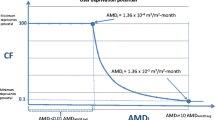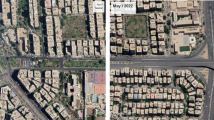Abstract
Conventional water infrastructure in urban environments is based on the centralized approach. This approach consists of building pipe network that provides potable water to consumers and drainage network that transport wastewater and stormwater runoff away from population centers. However, as illustrated in this article, centralized water infrastructures are not sustainable over a long period of time for a variety of reasons. This article presents the concept of a holistic approach for sustainable water management that incorporates decentralized water infrastructures into water management system design in urban environments. Decentralized water infrastructures are small to medium-scale systems that use and/or reuse local sources of water such as captured rainwater, stormwater runoff and wastewater. The holistic approach considers these waters as a valuable resource not to be wasted but utilized. This article briefly introduces various types of decentralized water infrastructures appropriate for urban settings. This article focuses on the effectiveness of rooftop rainwater harvesting systems as a decentralized water infrastructure and as a critical component of developing a holistic and sustainable water infrastructure in urban environments. Despite widespread use of rainwater harvesting systems, limited information has been published on its effectiveness for sustainable management of water resources and urban water infrastructures. This article, discusses multi-dimensional benefits of rainwater harvesting systems for sustainable management of water resources and its role as a critical component of decentralized water infrastructures in urban environments.
Similar content being viewed by others
References
Akbari H L, Rose S, Taha H (2003). Analyzing the land cover of an urban environment using high-resolution orthophotos. Landsc Urban Plan, 63(1): 1–14
American Rainwater Catchment Systems Association (ARCSA) (2011). Project gallery: http://www.arcsa.org/.Last accessed August 27, 2011
American Society of Civil Engineers (ASCE) (2009). Report card for America’s infrastructure. http://www.infrastructurereportcard.org/, Last accessed August 26, 2011
American Water Works Association (AWWA) (2005). Sizing water services lines and meters (M22). AWWA, Denver, CO
Carlson S W, Walburger A (2007). Energy index development for benchmarking water and wastewater utilities. AWWA Research Foundation, Denver, USA
Center for Science and Environment (CSE) (2011). Rainwater harvesting in urban areas. http://www.rainwaterharvesting.org/Urban/Urban.htm. Last accessed August 26, 2011
Chang M M, McBroom M W, Scott Beasley R (2004). Roofing as a source of nonpoint water pollution. J Environ Manage, 73(4): 307–315
Congressional Research Service (CRS) (2008). Water quality issues in the 110th Congress: Oversight and Implementation. CRS Report for US Congress. Washington DC. http://www.nationalaglawcenter.org/assets/crs/RL33800.pdf. Last accessed August 26, 2011
Crasta F M, Fasso C A, Patta F, Putzu G (1982). Carthaginian-roman cistern in Sardinia. In: Proceedings of the International Conference on Rain Water Cistern Systems, Honolulu, USA. June 1982
District Department of the Environment (DDOE) (2010). District of Columbia Greenhouse Gas Emissions Inventory (2006). Washington DC. http://green.dc.gov/green/lib/green/2010_1_12_ghgemissionsinventoryreport.pdf. Last accessed August 26, 2011
District of Columbia Water and Sewer Authority (DCWASA) (2006) Annual Report (2006). Washington DC. http://www.dcwater.com/news/publications/WASA_AnRepFIN.pdf. Last accessed August 26, 2011
District of Columbia Water and Sewer Authority (DCWASA) (2010). Annual Report (2010). http://www.dcwater.com/news/publications/DCWATER2010annual.pdf. Last accessed August 26, 2011
Dougherty M, Dymond R L, Goetz S J, Jantz C A, Goulet N (2004). Evaluation of impervious surface estimates in a rapidly urbanizing watershed. Photogramm Eng Remote Sensing, 70(11): 1275–1284
Förster J (1996). Patterns of roof runoff contamination and their potential implications on practice and regulation of treatment and local infiltration. Water Sci Technol, 33(6): 39–48
Garrison N R C, Wilkison R, Horner R (2009). A Clear Blue Future: How Greening California Cities Can Address Water Resources and Climate Challenges in the 21st Century. Technical Report, Natural Resources Defense Council (NRDC), New York
Gleick P H, Haasz D, Henges-Jeck C, Srinivasan V, Wolff G, Cushing K K, Mann A (2003). Waste Not, Want Not: The Potential for Urban Water Conservation in California. Pacific Institute for Studies in Development, Environment, and Security. Oakland, USA
Göbel P, Dierkes C, Coldewey W G (2007). Storm water runoff concentration matrix for urban areas. J Contam Hydrol, 91(1–2): 26–42
Good J C (1993). Roof runoff as a diffuse source of metals and aquatic toxicity in stormwater. Water Sci Technol, 28(3–5): 317–322
Gowland D, Younos T (2008). Feasibility of Rainwater Harvesting BMP for Stormwater Management. VWRRC SR38-2008, Virginia Tech, Blacksburg, USA
Grady C, Younos T (2008). Analysis of Water and Energy Conservation of Rainwater Capture System on a Single Family Home. VWRRC SR39-2008, Virginia Tech, Blacksburg, USA
Grady C, Younos T (2010). Water Use and Sustainability in La Altagracia, Dominican Republic. VWRRC SR49-2010, Virginia Tech, Blacksburg, USA
Herrmann T, Hasse K (1997).Ways to get water: Rainwater utilization or long distance water supply. Water Sci Technol, 36(8–9): 313–318
Kloss C (2008). Managing Wet Weather with Green Infrastructure Municipal Handbook on Rainwater Harvesting Policies. EPA-833-F-08-010. Washington DC
Lawson S (2011). Rainwater management solutions, Inc., Personal Communication. July 2011
Lawson S, LaBranche-Tucker A, Otto-Wack H, Hall R, Sojka B, Crawford E, Crawford D, Brand C (2009). Virginia Rainwater Harvesting Manual. 2nd ed. The Cabell Brand Center for Global Poverty and Resources Sustainability Studies, Salem, USA
Oliver J, Putnam C (1997). Energy efficiency: Learning how to avoid taking a bath on energy costs. Water Engineering & Management, 144(7): 22–25
Shuster W, Bonta J, Thurston H, Warnemuende E, Smith D (2005). Impacts of impervious surface on watershed hydrology: A review. Urban Water Journal, 2(4): 263–275
US Environmental Protection Agency (USEPA) (2003). Handbook for Management of Onsite and Clustered (Decentralized) Wastewater Treatment Systems. EPA-832-D-03-001. Washington DC
US Environmental Protection Agency (USEPA) (2007). Reducing Stormwater Costs Through Low Impact Development (LID) Strategies and Practices. EPA 841-F-07-006. Washington DC
US Environmental Protection Agency (USEPA) (2008). Onsite Wastewater Treatment Manual. EPA/625/R-00/008. Washington DC
Yaziz M I, Gunting H, Sapari N, Ghazali A W (1989). Variations in rainwater quality from roof catchments. Water Res, 23(6): 761–765
Young K D, Younos T, Dymond R L, Kibler D F (2009). Virginia’s Stormwater Impact Evaluation: Developing an Optimization Tool for Improved Site Development, Selection and Placement of Stormwater Runoff BMPs. VWRRC SR44-2009, Virginia Tech, Blacksburg, USA
Younos T, Bohdan R, Anderson E, Ramsey K, Cook N, Ross B B, Dillaha T (1998). Evaluation of Rooftop Rainfall Collection-cistern Storage Systems in Southwest Virginia. VWRRC SP3-1998, Virginia Tech, Blacksburg, USA
Younos T, Lawson S (2011). Climate Change Mitigation at the Local Level: Decentralized Water Infrastructure—Opportunities and Challenges. In: Proceedings of the American Water Resources Association—2011 Spring Specialty Conference—Managing Climate Change Impacts on Water Resources: Adaptation, Options and Strategies. Sehlke G, Olsen R, eds. April 18–20, 2011, Baltimore, USA
Author information
Authors and Affiliations
Corresponding author
Rights and permissions
About this article
Cite this article
Younos, T. Paradigm shift: Holistic approach for water management in urban environments. Front. Earth Sci. 5, 421–427 (2011). https://doi.org/10.1007/s11707-011-0209-7
Received:
Accepted:
Published:
Issue Date:
DOI: https://doi.org/10.1007/s11707-011-0209-7




